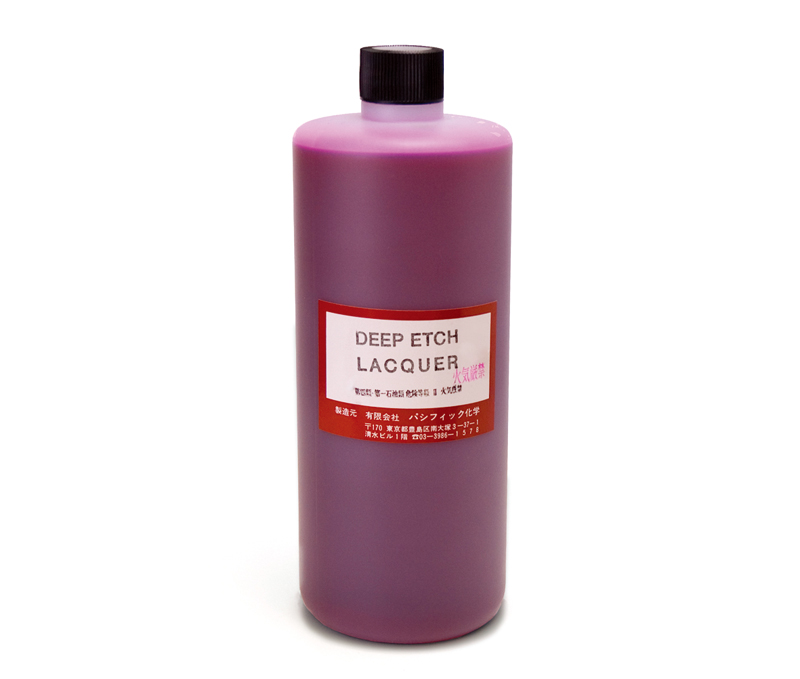Planographic Lacquer
平版用ラッカー
Heihan-yourakkā
CATEGORIES
Planographic lacquer is a pink volatile organic solvent used in the process of making metal lithography plates to reinforce the drawing.
Compared to stone plates, aluminum and other metal plates are less sensitive to oil. Therefore, a coat of planographic lacquer forms a thin resinous film which reinforces the drawing, protecting the finer lines from the acid content of the platemaking solution and etchant. This is often done in combination with the application of tincture (tincture replacement).
Planographic lacquer is used after the platemaking solution is applied on the finished drawing and the drawing is washed with print cleaner. An appropriate amount of lacquer is poured on the plate and is spread evenly in a thin coat over the entire surface using a piece of cloth. Since it is a highly volatile solvent, this process must be carried out quickly. After the lacquer dries completely, a coat of tincture is applied over the top. This produces a layer of lacquer and tincture on the drawing section and thus reinforces the plate surface. Print cleaner and turpentine will not cause the planographic lacquer to come off. This can be confirmed by the pink color remaining on the drawing section. The lacquer can be removed by dissolving it with a thinner.
Being a highly volatile organic solvent, planographic lacquer should always be used in a well-ventilated location, away from flame. Some of the major planographic lacquer products available include Eggen Lacquer (produced by Eggen) and Deep Etch Lacquer (produced by Pacific Chemical Co., Ltd.).
Planographic lacquer can be obtained at specialist stores that handle lithographic supplies.

